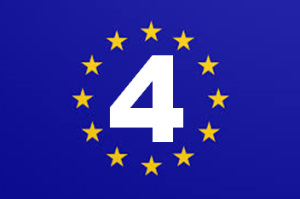 The shock waves reverberate in the European telecoms industry ever since Telenor and TeliaSonera in September deemed it pointless to continue negotiations with the European Commission to win support for a mobile merger between Telenor and Telia in Denmark.
The shock waves reverberate in the European telecoms industry ever since Telenor and TeliaSonera in September deemed it pointless to continue negotiations with the European Commission to win support for a mobile merger between Telenor and Telia in Denmark.
This was a wake up call for an industry who thought they had a green light for in-country mergers. The previous European Commission had approved three mergers each reducing the number of mobile operators from four to three:
- 3’s acquisition of Orange Austria – approved December 2012
- 3’s acquisition of O2 Ireland – approved May 2014
- O2 Germany‘s acquisition of E-plus – approved July 2014
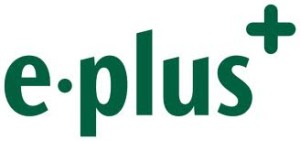 Especially the last, German, merger was deemed an important signal: If EU would approve a reduction in the number of operators in EU’s largest market, creating a new mobile market leader, what would stop it in any other country?
Especially the last, German, merger was deemed an important signal: If EU would approve a reduction in the number of operators in EU’s largest market, creating a new mobile market leader, what would stop it in any other country?
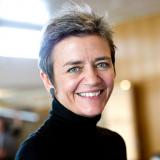 Margrethe Vestager, the new EU commissioner for competition, was appointed in September 2014 (alongside the rest of the commission) and it wasn’t long until reports came in claiming that prices had gone up in the markets where mergers had been approved. The remedies that the previous commission had required – mainly making sure that there would be room for MVNOs – were seen as insufficient.
Margrethe Vestager, the new EU commissioner for competition, was appointed in September 2014 (alongside the rest of the commission) and it wasn’t long until reports came in claiming that prices had gone up in the markets where mergers had been approved. The remedies that the previous commission had required – mainly making sure that there would be room for MVNOs – were seen as insufficient.
Yet, European operators quickly lined up to get new in-country mobile mergers approved:
- Telenor and TeliaSonera in Denmark
- 3 and O2 in the UK
- 3 and Wind in Italy
After Telenor’s and TeliaSonera’s decision to pull the plug on the Danish merger, Margrethe Vestager was clear that the merger was anyhow about to hit the wall. In a speech in New York less than a month later, she said:
“We were, however, on the road to prohibit the merger.”
So the merger would have been stopped even though it would have created a company generating less than 30% of the Danish telecom revenues. Since TDC has about 60%, some meant that the commission actually just helped the strong to get stronger.
We’ll soon come back to what happened next in the Danish market.
In her speech, Vestager gave two explanations to why the merger would have been prohibited:
- The third player, 3, would have been subscale compared to the new market leader Telenor/Telia and to the incumbent, TDC
- Telenor and Telia are already sharing the same network (TT-netværket) – and it’s as good as TDC’s
At the same time, Vestager underlined that there is no magic number and that each case will be assessed individually. On the other hand, she also said:
“Research seems to suggest that a reduction of the number of players from four-to-three in a national mobile market in the EU can lead to higher prices for consumers. But not that it leads to more investment per subscriber.”
![]() Which means that there is a magic number after all. And it’s four.
Which means that there is a magic number after all. And it’s four.
Margrethe Vestager is also telling operators that they – as in the Danish case – can share networks resulting in efficiency of scale without having to consolidate.
 The same day as Vestager’s speech, the Competition and Markets Authority (CMA) of the UK asked the European Commission to refer the investigation of 3’s acquisition of O2 to them.
The same day as Vestager’s speech, the Competition and Markets Authority (CMA) of the UK asked the European Commission to refer the investigation of 3’s acquisition of O2 to them.
The CMA has perhaps proven a bit easier to agree with than the new European Commission: The authority seems e.g. not to have had much of doubts when provisionally clearing the merger between BT and EE, creating a telco giant with close to 50% of the UK’s telecoms revenue. And the green light is given in spite of the partly overlapping businesses of BT and EE: BT has recently launched a mobile service in competition with EE (but over EE’s network) and EE has 919 thousand fixed broadband customers and has recently launched a TV proposition – competing with BT.
4th of December, the European Commission, however, decided not to refer the case to the UK.
Anybody believing in a yes? Let’s check against the two explanations given for the no in Denmark:
- 20% of UK’s telecoms revenue would be with 3+O2 – less than in Denmark. And in the UK no small player is left behind – like 3 would have been in Denmark.
- But there are network sharing JVs in the UK as well: 3 owns 50% of MBNL, running the 3G and 4G radio networks of 3 and EE. O2 owns 50% of CTIL, sharing the site infrastructure for 4G of O2 and Vodafone. With a similar logic as in Denmark, this would speak against a merger being approved.
Before concluding, we promised to come back to what happened in Denmark after the decision not to merge.
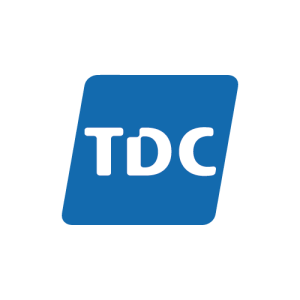 In October, a month after Telenor’s and TeliaSonera’s decision to pull back the merger, the incumbent TDC decided to increase the lowest mobile price point from 99 to 109 DKK – for all brands. Most of competition followed.
In October, a month after Telenor’s and TeliaSonera’s decision to pull back the merger, the incumbent TDC decided to increase the lowest mobile price point from 99 to 109 DKK – for all brands. Most of competition followed.
And now in December, TDC again raised that lowest mobile price point – with another 10 DKK to 119 DKK.
Faced with these facts, Margrethe Vestager in an interview in Berlingske, one of Denmark’s largest newspapers, commented:
“With a merger, the mobile prices would have increased even more”
And since that merger didn’t happen, nobody can know, just speculate.
Rather than wasting time and effort – and stalling all progress while waiting for a merger approval – European telcos should perhaps just do what the European Commission recommends: Don’t merge, create network sharing JVs instead.
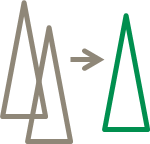 Through our network sharing JV benchmark – in 2016 running for the 4th consecutive year – we have experienced just how great network sharing is:
Through our network sharing JV benchmark – in 2016 running for the 4th consecutive year – we have experienced just how great network sharing is:
- Costs decrease – beyond the obvious sharing effect
- Scale increases
- Productivity increases
- Network coverage increases
- Utilisation increases
- Network quality increases
With dedicated and focused network professionals at the helm of the JVs, operators can focus on their core business – to attract, serve and retain customers. And beat the sh*t out of competition.

